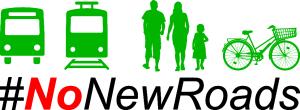Note: This will not be a regular feature, but occasional, to share meetings you might be interested in. Some are organizations, some are agencies.
Monday
- SACOG Bikeshare Policy Committee: 2:00PM, in person (1301 L St) or Zoom; the agenda is Overview of the Regional Bike Share Program (Nicole Zhi Ling Porter) and Update on Bike Share Technical Expert Agreement (Nicole Zhi Ling Porter). The presentations are not available ahead of time.
Wednesday
- Walkable City Book Club: an informal group meets to discuss Walkable City, by Jeff Speck, on occasion of the 10th Anniversary Edition; this week the group is discussing Part 3: Getting the Parking Right (page 117). The group meets 6:00PM at Lefty’s Taproom, 5610 Elvas Ave, Sacramento, CA 95819. Usually second Wednesday, but for May third Wednesday. If you want to be added to the email list, please email me (allisondan52@gmail.com) and I’l get you added.
- Sacramento Climate Coalition: meets 6:30PM once a month via Zoom to discuss climate action at the regional and state level; email info@sacclimate.org to get added to the email announcement list
Thursday
- ECOS Climate Committee: meets 6:00PM once a month via Zoom to discuss local climate concerns and actions; this month the topic is the recently released City of Sacramento Climate Action and Adaptation Plan.
- City of Sacramento Active Transportation Commission (SacATC): meets 6:00PM monthly in person (city council chambers) or via Zoom; agenda on the Upcoming Meetings page; this month the main agenda items are 21st Ave Beautification Project, Pocket Greenhaven Neighborhood Transportation Plan Final Draft, and Streets For People: Sacramento Active Transportation Plan Phase I Outreach.
Friday
- SacMoves Coalition: meets 10:00AM on third Fridays via Zoom; the coalition is primarily a gathering of organizations working in transportation, environment, and housing, but individuals may participate in meetings; to get added to the announcement list, please email Mia Machado, MMachado@sacbreathe.org.
Sacramento Transit Advocates and Riders (STAR) maintains a calendar of transit and transportation meetings on groups.io. You may subscribe to that calendar at https://groups.io/ics/1509831/783555437945795328/feed.ics. The calendar is not intended to be exhaustive, but is useful.





